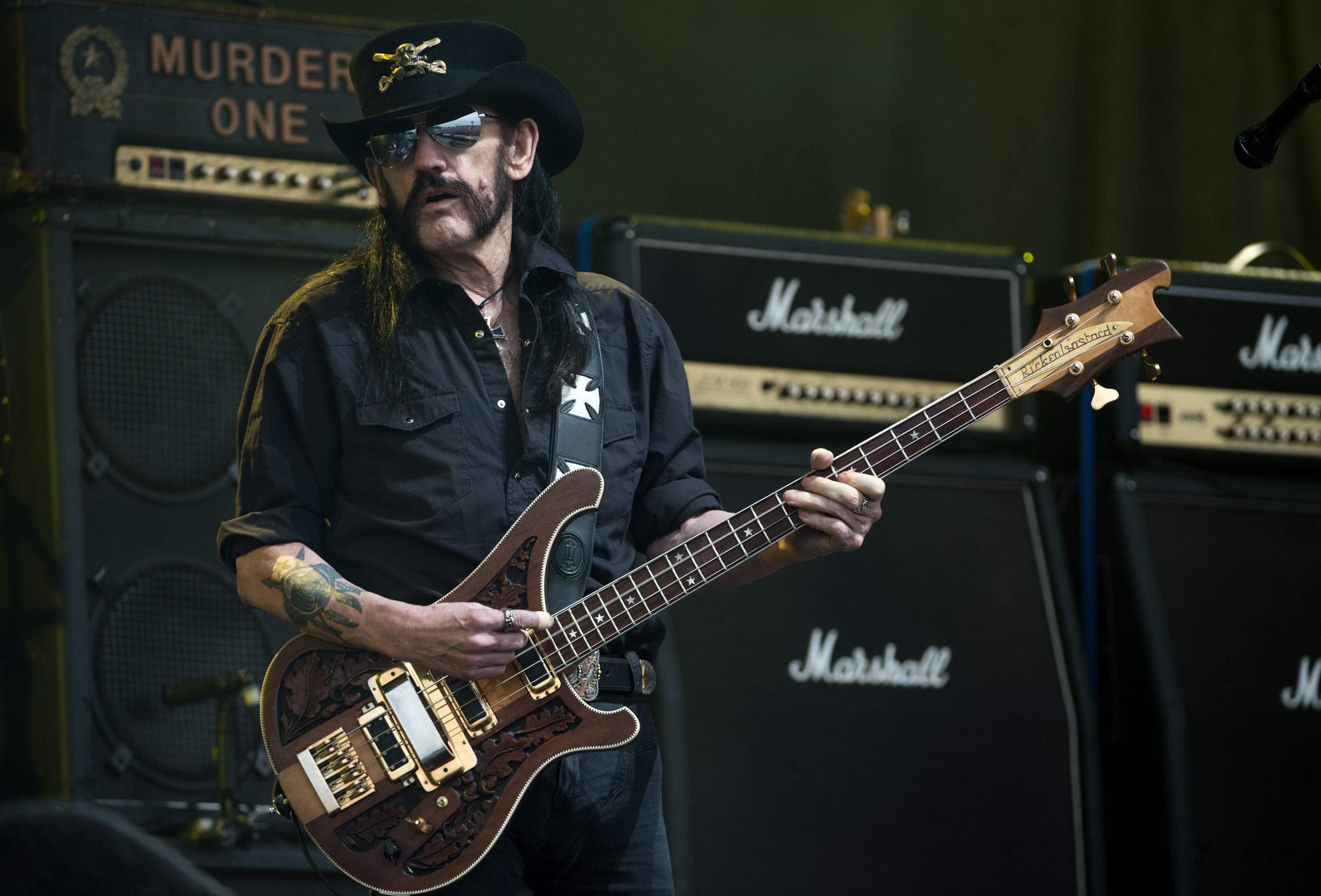Like Slayer or the Roots, Motörhead are never considered to be less than a great band, though their legend is somewhat automatic just for sticking it out and rocking so hard for so long. But the consistency of their product and lack of much of an interesting (to outsiders, anyway) career arc — means that no individual album in their career made a commercial or critical dent the way Back in Black or Master of Puppets did.
Many believe that any Lemmy makes for good Lemmy, which isn’t such a bad notion. But the late frontman had his career highlights like any other songsmith worth his leather, and he left his comfort zone more often than he’s given credit for: see his co-written and surprisingly twinkling Ozzy Osbourne smash “Mama, I’m Coming Home,” and on 2015’s Bad Magic, which now stands as his epitaph, a roiling, hard-earned workout through the Stones’ “Sympathy for the Devil.” His own catalog with Motörhead, the quintessential English hard rock outfit, is 40 years deep, and that’s not even counting his psychedelic spelunking with the previous Hawkwind. But here’s a starter guide to five of Motörhead’s toughest, most life-affirming works of three-chord art, with plenty of shredding to go around.
5. Overkill (1979)
How bizarre that the most no-frills metal band to ever exist should be known for a pulverizing classic called “Overkill,” which also introduces double bass drums as a genre standard the way Kool Herc did turntables, and makes them sound so integral it seems sensible to wonder about a third. As lean as punk, the not-quite-swinging grooves of “Stay Clean” and “(I Won’t) Pay Your Price” beat and bruise where other bands bludgeon. And you can count on one hand the number of cock-rock acts in 1979 who would’ve cut “I’ll Be Your Sister.”
https://youtube.com/watch?v=0LZxelSc62Y
4. Rock ‘n’ Roll (1987)
Longtime fans could stand to appreciate Motörhead’s late-‘80s stride more; maybe there’s a grudge because they definitively denied being metal once and for all? Sure, with its goofy cover, not-news title, and end-of-a-streak chart position, 1987’s Rock ‘n’ Roll doesn’t seem any less rote than say, AC/DC’s Blow Up Your Video or Ozzy’s Bark at the Moon. But there’s that thing about not judging a book by its cover, and it’s remarkable how little dust has gathered here, with the title track, “Eat the Rich,” and “Stone Deaf in the U.S.A.” especially pumping it out as good as any peak Steppenwolf or Thin Lizzy. Legend as Lemmy might have been, his repetitious career was easy for canonists to take for granted. Now that future product has been canceled forever, the boogieing “Traitor” and proto-Extreme funkage of “Dogs” are merely two arguments for the underplayed catalog we were already gifted. — D.W.
https://youtube.com/watch?v=vcf7DnHi54g
3. Ace of Spades (1980)
A dozen blasts of Thin Lizzy-righteous rock fireworks delivered at Sham 69 speed and coarseness, Motörhead’s most successful studio album sees Lemmy, Eddie, and Phil flicking off three-minute classics like ash from chain-smoked cigarettes. Eventual live standards “Jailbait,” “(We Are) The Roadcrew,” and “The Hammer” barely even stand apart out from similarly scorching deeper cuts “Shoot You in the Back,” “Live to Win,” and “Bite the Bullet.” But of course, the title track opener towers above all, one of the purest statements of rock and roll vitality ever spit out through clenched teeth, and a three-minute insurance policy against its accompanying album ever seeming even the slightest bit weathered by age. — ANDREW UNTERBERGER
https://youtube.com/watch?v=IuRxjjcPgOo
2. 1916 (1991)
Motörhead’s first album of the ‘90s gave us good reason to believe they had another decade like their ‘70s or ‘80s ahead of them. It was not to be, but what a last gasp of greatness: From the opening kick-drum cannonballs of “The One to Sing the Blues,” this is a legendary band un-muddying themselves the correct way, putting crunch and thunder and speed above all else without sacrificing clarity or dirt. But 1916 is also a hard rebuke to anyone who thinks you hear one Lemmy and Co. offering and you’ve heard them all. The quantum leap in production quality gives them new dimensions of power, and for detours there’s the (literally) heavenward chorus of “No Voices in the Sky,” the 90-second Ramones tribute “R.A.M.O.N.E.S.,” and the elegiac, synths-and-strings title closer, which has no parallel in the ‘Head’s catalog or any other rock’n’roller’s — the Chieftains could cover it. Lemmy was quick to obfuscate his maturation over his 40 years onstage. But you don’t get to that point without elevating your craft along the way, even if you’re the type who names an album Orgasmatron. — D.W.
1. No Sleep ‘Til Hammersmith (1981)
What does Motörhead need the studio for anyway? These guys weren’t exactly making “Tomorrow Never Knows,” and the military-battalion drums, vertebrae-loosening bass and gasoline-leaking vocals all sound best pushed into the red as one-take slop anyway. Their first live double has “Ace of Spades,” “Stay Clean,” “Overkill,” “(We Are) the Road Crew” and the battering-ram debut “Motörhead,” all meaner and uglier when sweating into each other’s eyeballs than when tracked individually in studio chairs. No Sleep ‘Til Hammersmith is a de facto late-‘70s best-of, covered in unwashed tour-body slime. How Lemmy would have wanted. — D.W.





